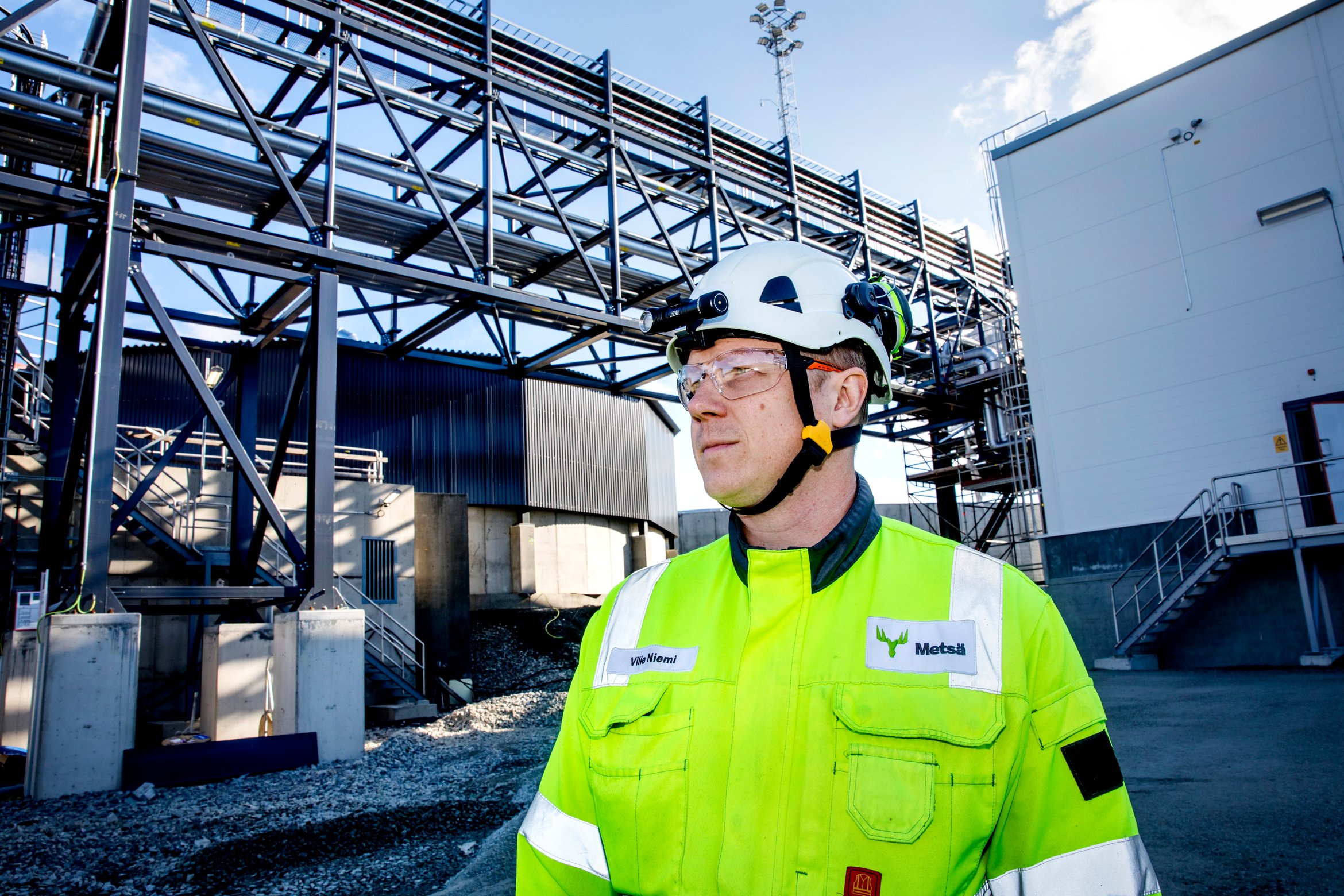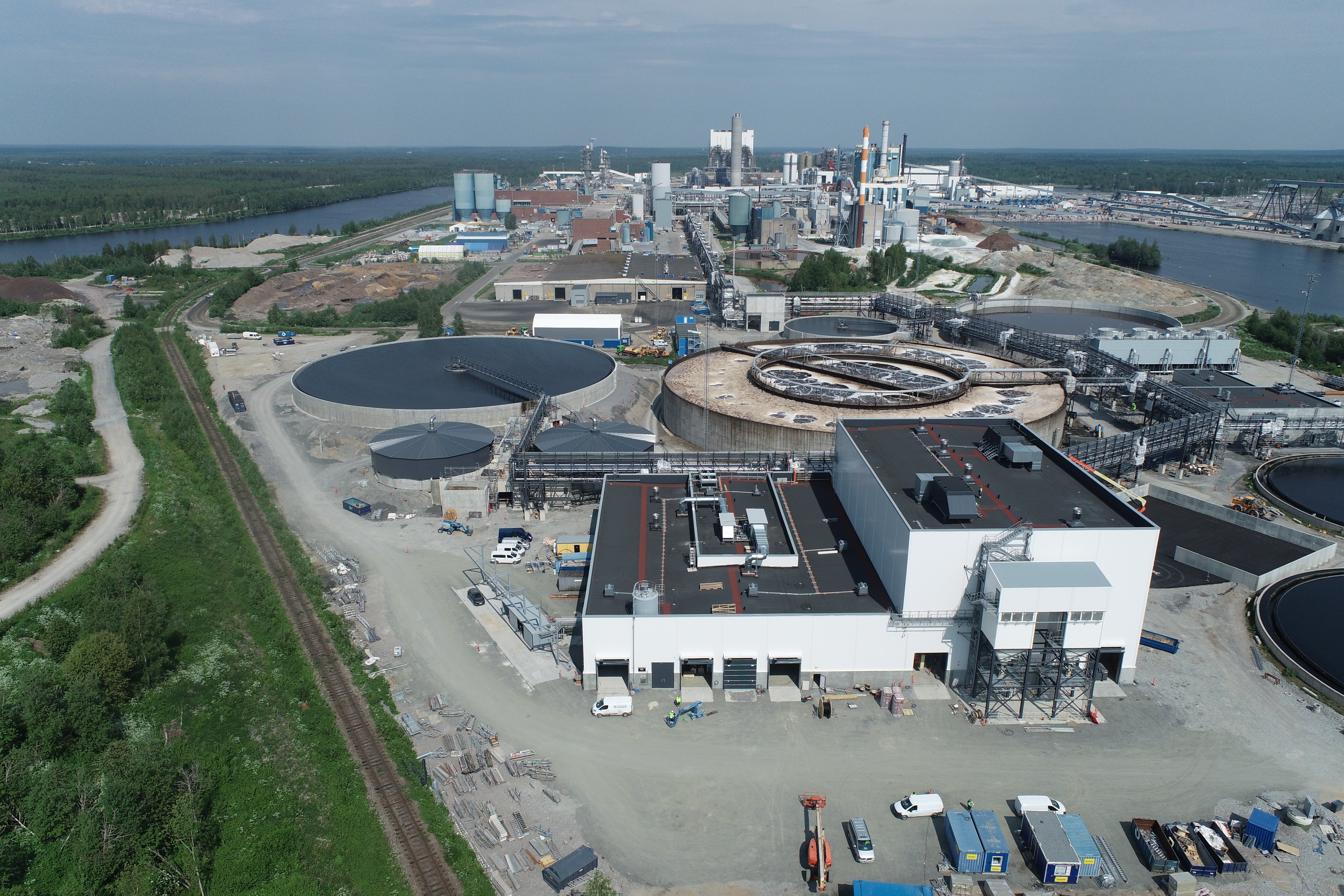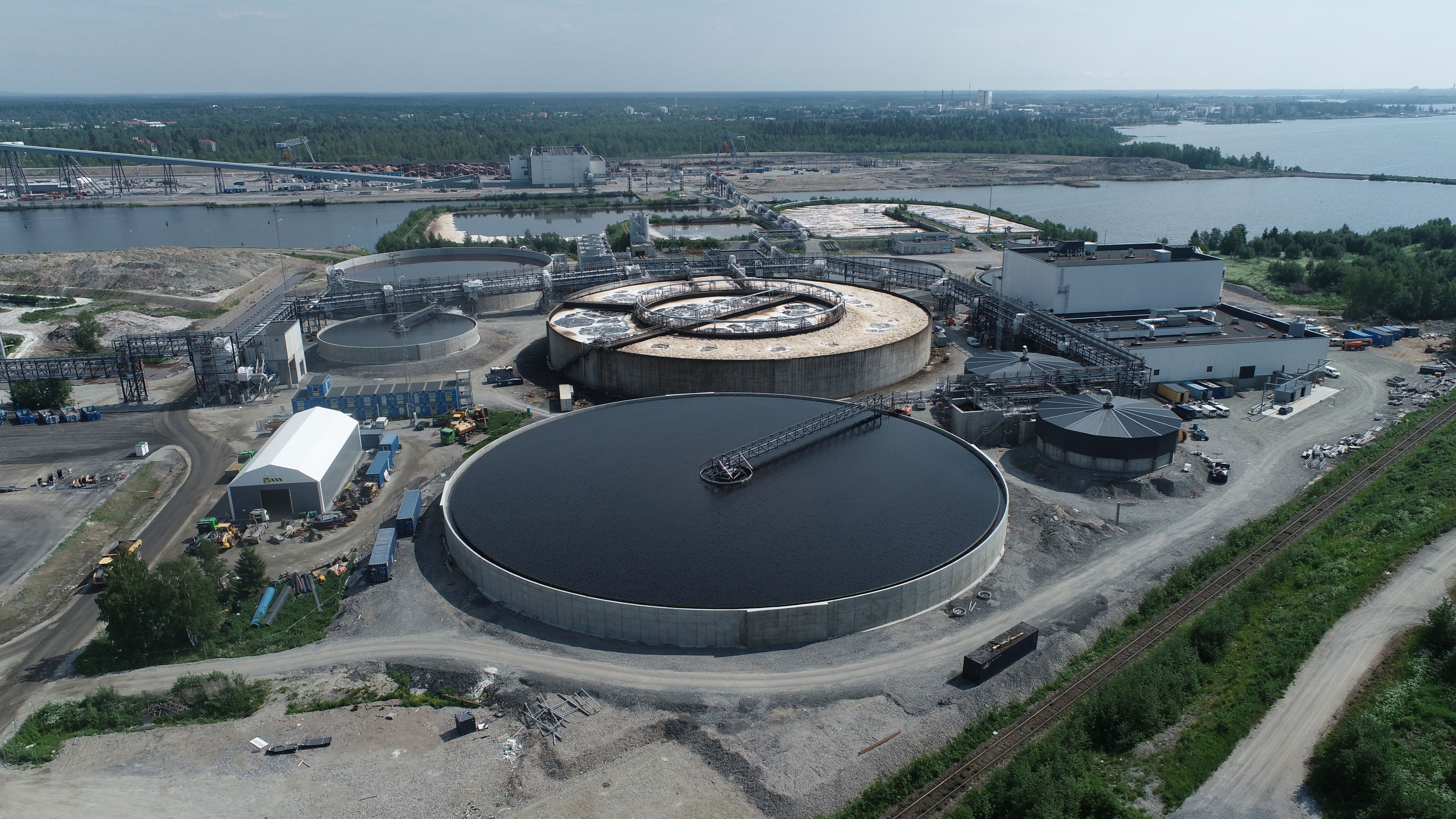The new wastewater treatment plant has been built near the former wastewater treatment plant in Pajusaari.
"After biological treatment, the wastewater goes to chemical treatment and from there through mechanical disc filters. Compared to the previous wastewater treatment plant, there are two more process steps," says project manager Ville Niemi.

The wastewater for the new wastewater treatment is diverted from the processes of the running mill.
On average, 70,000 to 80,000 cubic meters of wastewater pass through the bioproduct mill’s wastewater treatment plant per day, and the amount decreases over time.
Fibrous and fiber-free wastewater comes to the treatment plant from the mill. Fibers are removed from fibrous wastewater in the pre-clarification process before they are fed to neutralization and biological treatment. In biological treatment, microbes and bacteria eat the solid matter. Bacteria and microbes require an even habitat, which is why the warm wastewater is cooled in the wastewater plant's cooling towers to a temperature of around 35 degrees.
"This is followed by chemical treatment, where the dissolved solid matter is precipitated out of the biologically purified wastewater with the help of chemicals. The last step is the disc filtering stage, where the wastewater flows through the disc filters. If there are still solid particles left in the wastewater, they can be removed at this stage."
In the wastewater treatment process, three different types of sludge are produced, which are directed to a sludge treatment plant, where part of it is dried and pelletized for use as fuel.

Kemi bioproduct mill’s wastewater treatment process is a technology designed by Aquaflow Oy, tested and used at the Äänekoski bioproduct mill, with a few improvements. Thanks to the three-stage, efficient and advanced wastewater treatment, the environmental load of the bioproduct mill in Kemi is very low.
